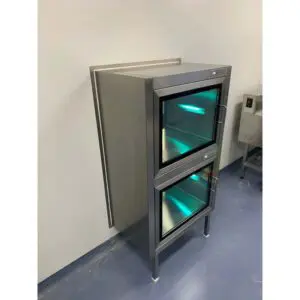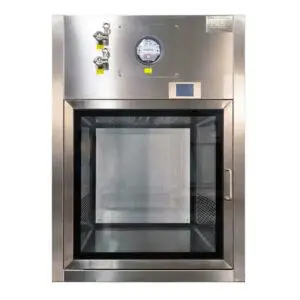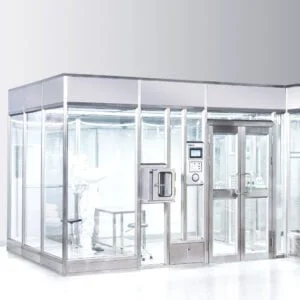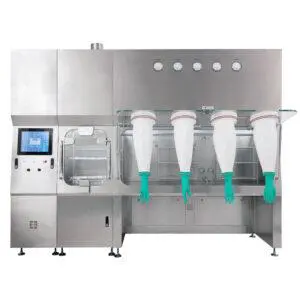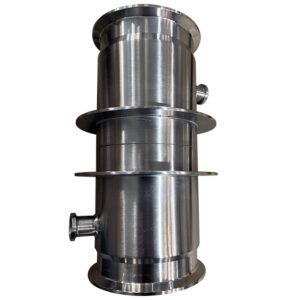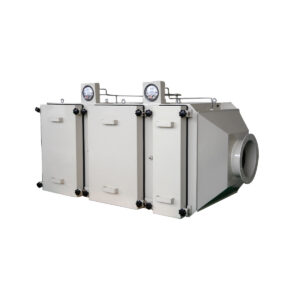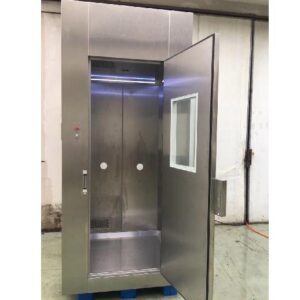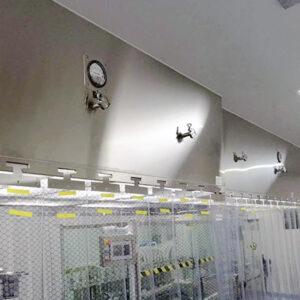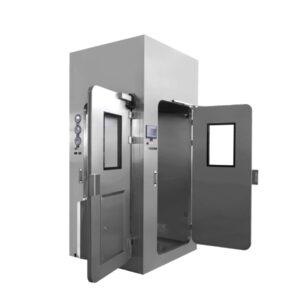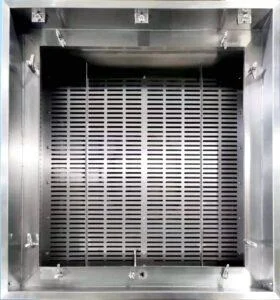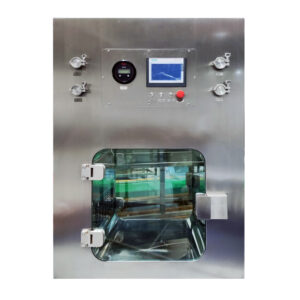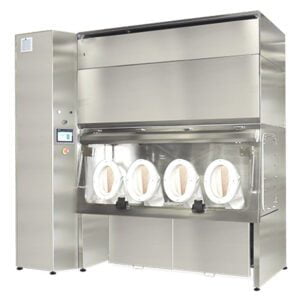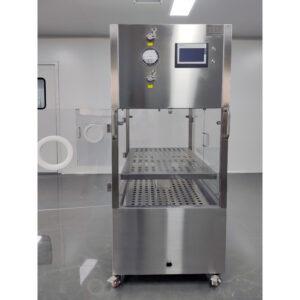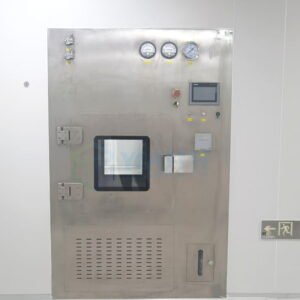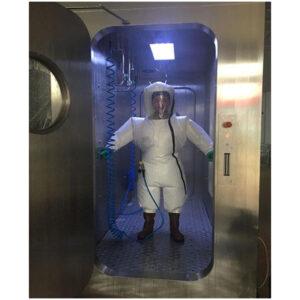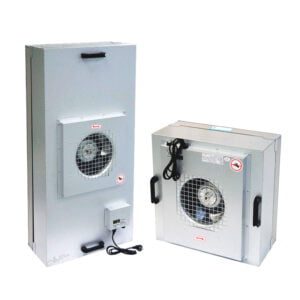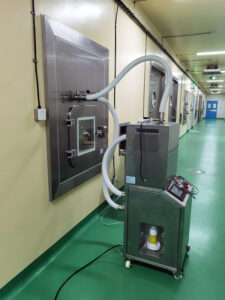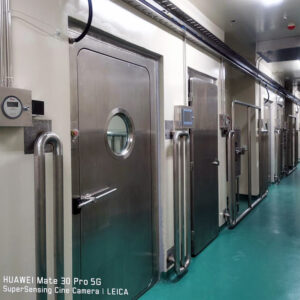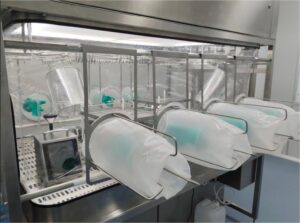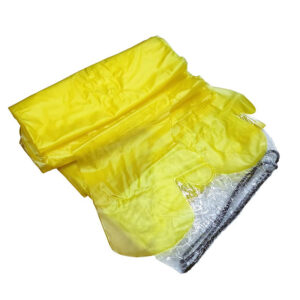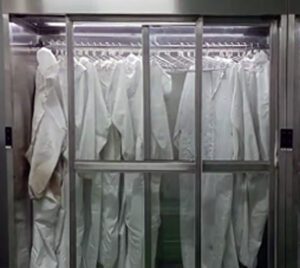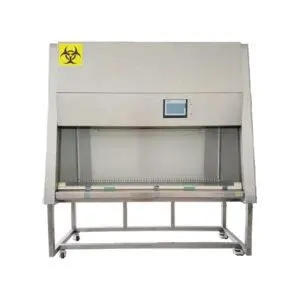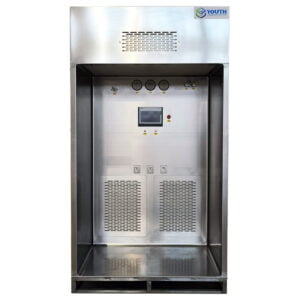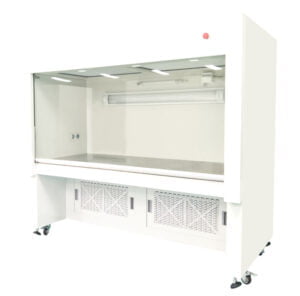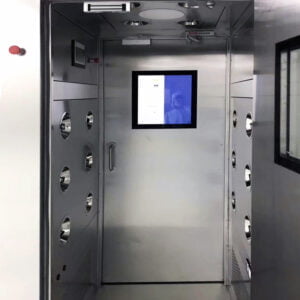Lighting systems play a crucial role in maintaining sterility and ensuring optimal visibility within sterility test isolators. As the pharmaceutical and biotechnology industries continue to advance, the importance of proper lighting in these controlled environments cannot be overstated. Effective lighting not only enhances the visibility of critical processes but also contributes to the overall safety and efficiency of sterility testing procedures.
In this comprehensive guide, we'll explore the best practices for lighting systems in sterility test isolators, addressing key considerations, innovative technologies, and industry standards. From illumination techniques to energy efficiency, we'll delve into the various aspects that make up an ideal lighting system for these specialized environments.
As we navigate through this topic, we'll examine the critical role of lighting in maintaining sterile conditions, discuss the latest advancements in LED technology, and explore how intelligent lighting control systems are revolutionizing the field. We'll also address the challenges faced by professionals in implementing and maintaining these systems, offering practical solutions and expert insights.
Let's begin our journey into the world of lighting systems for sterility test isolators, uncovering the best practices that ensure optimal performance, safety, and compliance in these critical environments.
Proper lighting systems in sterility test isolators are essential for maintaining sterile conditions, enhancing visibility, and ensuring the accuracy of testing procedures.
What are the key components of an effective lighting system for sterility test isolators?
When designing a lighting system for sterility test isolators, several crucial components must be considered to ensure optimal performance and functionality. These elements work together to create an environment that supports accurate testing procedures while maintaining sterile conditions.
The primary components of an effective lighting system include high-quality LED fixtures, glare-reducing diffusers, and intelligent control systems. Each of these plays a vital role in providing consistent, uniform illumination throughout the isolator workspace.
In addition to these core components, factors such as color temperature, light intensity, and energy efficiency must be carefully considered. The integration of these elements results in a lighting system that not only meets regulatory requirements but also enhances the overall effectiveness of sterility testing processes.
A well-designed lighting system for sterility test isolators incorporates LED fixtures, glare-reducing diffusers, and intelligent controls to provide optimal illumination and support accurate testing procedures.
To better understand the key components of an effective lighting system, let's examine the following table:
| Component | Function | Importance |
|---|---|---|
| LED Fixtures | Provide primary illumination | High |
| Glare-reducing Diffusers | Minimize reflections and eye strain | Medium |
| Intelligent Controls | Adjust lighting based on needs and conditions | High |
| Color Temperature Adjustment | Ensure accurate color rendering | Medium |
| Energy-efficient Design | Reduce power consumption and heat generation | High |
As we can see, each component plays a specific role in creating an optimal lighting environment within sterility test isolators. By carefully selecting and integrating these elements, facilities can ensure that their lighting systems meet the highest standards of performance and reliability.
In conclusion, the key components of an effective lighting system for sterility test isolators work in harmony to create an environment that supports precise testing procedures, maintains sterile conditions, and enhances overall operational efficiency. By investing in high-quality components and thoughtful design, facilities can significantly improve the accuracy and reliability of their sterility testing processes.
How does proper lighting contribute to maintaining sterility in isolators?
Proper lighting in sterility test isolators goes beyond simple illumination; it plays a crucial role in maintaining the sterile environment necessary for accurate and reliable testing. The right lighting system contributes to sterility in several important ways, ensuring that the isolator remains a controlled and contaminant-free space.
One of the primary ways lighting contributes to sterility is by enhancing visibility, allowing operators to detect any potential contamination or irregularities quickly. Clear, uniform illumination makes it easier to spot foreign particles, microbial growth, or any breach in the sterile barrier system.
Furthermore, advanced lighting systems can incorporate UV-C technology, which has germicidal properties. When used in conjunction with traditional cleaning methods, UV-C lighting can help reduce the bioburden within the isolator, further enhancing sterility.
Proper lighting in sterility test isolators enhances visibility for contamination detection and can incorporate UV-C technology to aid in maintaining a sterile environment.
To better understand the impact of lighting on sterility, consider the following table:
| Lighting Feature | Sterility Benefit | Impact Level |
|---|---|---|
| Uniform Illumination | Improved detection of contaminants | High |
| UV-C Integration | Reduced bioburden | Medium |
| Glare Reduction | Enhanced visual accuracy | Medium |
| Color Rendering | Accurate identification of substances | High |
| Heat Management | Minimized risk of temperature-related contamination | Medium |
As we can see, various aspects of lighting design contribute to maintaining sterility within isolators. By implementing these features, facilities can significantly enhance their ability to maintain a sterile environment and conduct accurate tests.
In conclusion, proper lighting is an essential component in maintaining sterility within isolators. By providing clear visibility, incorporating germicidal technologies, and supporting accurate visual assessments, lighting systems play a vital role in ensuring the integrity of sterility testing procedures. As technology continues to advance, we can expect lighting systems to play an even more significant role in maintaining sterile environments in the future.
What are the latest advancements in LED technology for sterility test isolators?
The field of LED technology has seen remarkable advancements in recent years, with significant implications for lighting systems in sterility test isolators. These innovations have led to improved performance, energy efficiency, and adaptability, making LED lighting an ideal choice for these critical environments.
One of the most notable advancements is the development of high-efficiency LEDs that produce more lumens per watt, resulting in brighter illumination with lower energy consumption. This not only reduces operational costs but also minimizes heat generation within the isolator, contributing to temperature stability.
Another significant innovation is the introduction of tunable white light LEDs, which allow for adjustable color temperature. This feature enables operators to optimize lighting conditions for different tasks or materials, enhancing visual acuity and reducing eye strain during extended periods of use.
Recent advancements in LED technology for sterility test isolators include high-efficiency LEDs and tunable white light capabilities, improving both performance and adaptability in these critical environments.
To better understand the impact of these advancements, let's examine the following table:
| LED Advancement | Benefit | Impact on Sterility Testing |
|---|---|---|
| High-efficiency LEDs | Reduced energy consumption and heat generation | Improved temperature stability |
| Tunable white light | Optimized visual conditions for various tasks | Enhanced accuracy in sample examination |
| Miniaturization | More compact fixtures for space-constrained isolators | Increased workspace within isolators |
| Improved color rendering | More accurate color representation | Better identification of sample characteristics |
| Long lifespan | Reduced maintenance requirements | Minimized risk of contamination during lamp replacements |
These advancements in LED technology have significantly improved the lighting capabilities within sterility test isolators. The combination of energy efficiency, adaptability, and improved performance makes modern LED systems an excellent choice for these critical environments.
In conclusion, the latest advancements in LED technology have brought substantial benefits to lighting systems for sterility test isolators. From improved energy efficiency to enhanced visual acuity, these innovations contribute to more accurate and reliable sterility testing procedures. As LED technology continues to evolve, we can expect even more sophisticated lighting solutions tailored to the unique needs of sterility testing environments.
How can intelligent lighting control systems enhance the performance of sterility test isolators?
Intelligent lighting control systems have emerged as a game-changer in the realm of sterility test isolators, offering unprecedented levels of customization, automation, and efficiency. These advanced systems go beyond simple on/off functionality, providing a range of features that can significantly enhance the performance and effectiveness of sterility testing procedures.
One of the key benefits of intelligent lighting control systems is their ability to adapt to different testing scenarios. These systems can be programmed to adjust light intensity and color temperature based on specific tasks or time of day, ensuring optimal visibility and reducing eye strain for operators working long hours.
Moreover, intelligent controls can integrate with other isolator systems, such as HVAC and access control, to create a holistic approach to environmental management. This integration allows for coordinated responses to changes in conditions, maintaining the ideal environment for sterility testing.
Intelligent lighting control systems in sterility test isolators offer customizable lighting scenarios, integration with other systems, and automated responses to environmental changes, significantly enhancing overall performance and efficiency.
To better understand the capabilities of intelligent lighting control systems, consider the following table:
| Feature | Benefit | Impact on Sterility Testing |
|---|---|---|
| Task-specific lighting presets | Optimized illumination for different procedures | Improved accuracy and efficiency |
| Occupancy sensing | Automatic adjustment based on presence | Energy savings and reduced contamination risk |
| Daylight harvesting | Integration of natural light | Improved energy efficiency and operator comfort |
| Remote monitoring and control | Real-time adjustments and troubleshooting | Enhanced operational flexibility and reduced downtime |
| Data logging and analytics | Performance tracking and optimization | Continuous improvement of testing procedures |
These features demonstrate the wide-ranging benefits that intelligent lighting control systems can bring to sterility test isolators. By providing a more responsive and adaptable lighting environment, these systems contribute to improved testing accuracy, energy efficiency, and overall operational effectiveness.
In conclusion, intelligent lighting control systems represent a significant advancement in the field of sterility test isolators. Their ability to adapt to specific tasks, integrate with other systems, and provide valuable data insights makes them an invaluable tool in maintaining optimal testing conditions. As these systems continue to evolve, we can expect even greater levels of automation and intelligence, further enhancing the performance and reliability of sterility testing procedures.
What are the energy efficiency considerations for lighting systems in sterility test isolators?
Energy efficiency is a critical consideration when designing lighting systems for sterility test isolators. Not only does it contribute to reduced operational costs, but it also plays a vital role in maintaining the controlled environment necessary for accurate testing. As such, implementing energy-efficient lighting solutions has become a priority for many facilities.
One of the primary ways to achieve energy efficiency is through the use of LED lighting. YOUTH LED fixtures consume significantly less power than traditional lighting options while providing superior illumination. This reduction in energy consumption translates to lower heat generation within the isolator, helping to maintain stable temperatures crucial for sterility testing.
Another important aspect of energy efficiency is the implementation of smart controls. These systems can automatically adjust lighting levels based on occupancy, time of day, or specific task requirements, ensuring that energy is not wasted when full illumination is not necessary.
Energy-efficient lighting systems in sterility test isolators, featuring LED technology and smart controls, significantly reduce power consumption and heat generation, contributing to a more stable and cost-effective testing environment.
To better understand the energy efficiency considerations, let's examine the following table:
| Energy Efficiency Feature | Benefit | Impact on Isolator Performance |
|---|---|---|
| LED Lighting | Low power consumption and heat generation | Improved temperature stability |
| Smart Controls | Automated energy management | Optimized energy use and extended equipment life |
| Task-specific Lighting | Targeted illumination | Reduced overall energy consumption |
| Heat Dissipation Design | Minimized thermal impact | Enhanced environmental control |
| Power Factor Correction | Improved electrical efficiency | Reduced strain on facility power systems |
These energy efficiency features not only contribute to cost savings but also play a crucial role in maintaining the precise environmental conditions required for sterility testing. By reducing heat generation and optimizing power consumption, these systems help ensure the integrity of the testing process.
In conclusion, energy efficiency is a paramount consideration in the design of lighting systems for sterility test isolators. Through the implementation of LED technology, smart controls, and other energy-saving features, facilities can significantly reduce their energy consumption while maintaining optimal testing conditions. As energy efficiency technologies continue to advance, we can expect even greater improvements in the performance and sustainability of lighting systems for sterility test isolators.
How do lighting systems impact operator comfort and productivity in sterility test isolators?
The impact of lighting systems on operator comfort and productivity in sterility test isolators cannot be overstated. Proper lighting not only ensures accurate testing procedures but also plays a crucial role in maintaining the well-being and efficiency of the personnel working within these controlled environments.
One of the primary ways lighting affects operator comfort is through the reduction of eye strain. High-quality Sterility test isolator lighting systems with appropriate color temperature and glare reduction features can significantly decrease visual fatigue, allowing operators to maintain focus and accuracy over extended periods.
Furthermore, well-designed lighting systems can contribute to improved alertness and mood. By mimicking natural daylight patterns, these systems can help regulate operators' circadian rhythms, potentially leading to better overall performance and job satisfaction.
Properly designed lighting systems in sterility test isolators significantly reduce eye strain, improve alertness, and contribute to overall operator comfort and productivity, leading to more accurate and efficient testing procedures.
To better understand the impact of lighting on operator comfort and productivity, consider the following table:
| Lighting Feature | Comfort Benefit | Productivity Impact |
|---|---|---|
| Adjustable Color Temperature | Reduced eye strain | Improved visual acuity |
| Glare Reduction | Decreased visual fatigue | Enhanced focus on tasks |
| Uniform Illumination | Reduced shadows and contrast issues | More accurate sample examination |
| Dimming Capability | Customizable light levels | Adaptability to different tasks |
| Circadian-friendly Lighting | Improved alertness and mood | Better overall performance |
These features demonstrate how thoughtfully designed lighting systems can significantly enhance the working environment within sterility test isolators. By prioritizing operator comfort, facilities can expect to see improvements in both the quality and efficiency of testing procedures.
In conclusion, lighting systems have a profound impact on operator comfort and productivity in sterility test isolators. By implementing features that reduce eye strain, improve alertness, and enhance overall well-being, facilities can create an environment that supports both accurate testing and employee satisfaction. As our understanding of the relationship between lighting and human performance continues to grow, we can expect further innovations in lighting design that will further enhance the operator experience in these critical environments.
What are the regulatory requirements for lighting in sterility test isolators?
Navigating the regulatory landscape for lighting in sterility test isolators is crucial for ensuring compliance and maintaining the integrity of testing procedures. While specific requirements may vary depending on the jurisdiction and industry, there are several general guidelines that facilities must adhere to when designing and implementing lighting systems for these critical environments.
One of the primary regulatory considerations is the provision of adequate illumination for all tasks performed within the isolator. This typically includes specifications for minimum light levels, measured in lux or foot-candles, to ensure that operators can accurately perform their duties and identify any potential issues or contamination.
Additionally, regulations often address the quality of light, including color rendering index (CRI) requirements to ensure accurate color perception of samples and materials. This is particularly important in sterility testing, where subtle color changes can be indicative of microbial growth or other contamination.
Regulatory requirements for lighting in sterility test isolators typically include specifications for minimum light levels, color rendering, and the ability to maintain sterile conditions, ensuring accurate and reliable testing procedures.
To better understand the regulatory landscape, let's examine the following table of common requirements:
| Regulatory Aspect | Typical Requirement | Purpose |
|---|---|---|
| Minimum Light Level | 500-1000 lux at work surface | Ensure adequate visibility for tasks |
| Color Rendering Index (CRI) | ≥ 90 | Accurate color perception of samples |
| Uniformity | ≥ 0.7 (ratio of minimum to average illuminance) | Consistent lighting across work area |
| Glare Control | UGR ≤ 19 | Reduce eye strain and improve visibility |
| Cleanability | IP65 rating or higher | Maintain sterile conditions |
It's important to note that these requirements may vary depending on the specific standards being followed (e.g., ISO, FDA, EU GMP) and the particular application of the sterility test isolator.
In conclusion, regulatory requirements for lighting in sterility test isolators are designed to ensure that these critical environments provide optimal conditions for accurate and reliable testing. By adhering to specifications for light levels, color rendering, uniformity, and cleanability, facilities can maintain compliance while supporting the important work carried out in these isolators. As regulations continue to evolve, it's crucial for facilities to stay informed and adapt their lighting systems accordingly to meet the latest standards and best practices in the industry.
How can facilities troubleshoot and maintain lighting systems in sterility test isolators?
Effective troubleshooting and maintenance of lighting systems in sterility test isolators are crucial for ensuring consistent performance, regulatory compliance, and the integrity of testing procedures. Developing a comprehensive strategy for addressing issues and performing regular upkeep can significantly extend the lifespan of lighting equipment and minimize disruptions to operations.
One of the key aspects of effective troubleshooting is the implementation of a robust monitoring system. This can include sensors that detect changes in light output, color temperature, or energy consumption, alerting maintenance teams to potential issues before they become critical. Regular inspections and performance testing should also be conducted to identify any signs of wear or degradation.
Maintenance protocols should include routine cleaning of lighting fixtures and diffusers to ensure optimal light output and prevent the accumulation of contaminants. Additionally, facilities should establish a schedule for replacing LED modules or other components based on manufacturer recommendations and usage patterns.
Effective troubleshooting and maintenance of lighting systems in sterility test isolators involve implementing monitoring systems, conducting regular inspections, and following established maintenance protocols to ensure consistent performance and regulatory compliance.
To better understand the troubleshooting and maintenance process, consider the following table:
| Maintenance Task | Frequency | Purpose |
|---|---|---|
| Visual Inspection | Weekly | Identify visible damage or degradation |
| Light Output Measurement | Monthly | Ensure consistent illumination levels |
| Cleaning of Fixtures | Quarterly | Maintain optimal light output and sterility |
| Color Temperature Check | Bi-annually | Verify accurate color rendering |
| Component Replacement | As needed or per manufacturer schedule | Prevent failures and maintain performance |
These maintenance tasks form the foundation of a comprehensive care program for lighting systems in sterility test isolators. By adhering to a regular maintenance schedule and promptly addressing any issues that arise, facilities can ensure the longevity and reliability of their lighting systems.
In conclusion, effective troubleshooting and maintenance of lighting systems in sterility test isolators require a proactive approach that combines regular inspections, performance monitoring, and scheduled maintenance activities. By implementing these practices, facilities can minimize downtime, ensure compliance with regulatory requirements, and maintain the high standards of performance necessary for accurate sterility testing. As lighting technologies continue to advance, it's important for maintenance strategies to evolve accordingly, incorporating new tools and techniques to keep these critical systems operating at peak efficiency.
In conclusion, lighting systems for sterility test isolators play a crucial role in maintaining the integrity of testing procedures, ensuring operator comfort, and supporting overall facility efficiency. Throughout this article, we've explored various aspects of these systems, from the latest advancements in LED technology to regulatory requirements and maintenance best practices.
We've seen how proper lighting contributes to maintaining sterility by enhancing visibility and incorporating features like UV-C technology. The integration of intelligent control systems has further elevated the capabilities of these lighting solutions, offering unprecedented levels of customization and automation.
Energy efficiency has emerged as a key consideration, not only for cost savings but also for maintaining the controlled environment necessary for accurate testing. The impact of lighting on operator comfort and productivity underscores the importance of thoughtful design in these systems.
Navigating the regulatory landscape and implementing effective troubleshooting and maintenance strategies are essential for ensuring the long-term performance and compliance of lighting systems in sterility test isolators.
As technology continues to advance, we can expect further innovations in lighting systems for sterility test isolators. These developments will likely focus on enhancing energy efficiency, improving control capabilities, and further optimizing the testing environment.
By staying informed about best practices and emerging technologies, facilities can ensure that their lighting systems continue to meet the highest standards of performance, supporting the critical work of sterility testing in the pharmaceutical and biotechnology industries.
External Resources
The Basics of Lighting Control Systems: An Introduction and Guide – This article provides a comprehensive introduction to lighting control systems, including their components, functionality, and how they create tailored lighting experiences for various spaces.
Lighting Control System – This Wikipedia entry explains the concept of lighting control systems, their applications in commercial, industrial, and residential spaces, and their role in energy efficiency and compliance with building codes.
Commercial Office Lighting Solutions – This page from Lutron discusses integrated lighting, shading, and AV solutions for office spaces, focusing on enhancing employee well-being, productivity, and energy conservation.
LED Commercial Lighting Fixtures – This resource details various types of commercial lighting fixtures, including their applications, styles, and the different methods they use to provide light (e.g., downlighting, uplighting).
Smart Lighting Guide – Although not directly linked, this type of resource would typically cover smart lighting systems, their benefits, and how they integrate with other smart home or office technologies.
Lighting Control Systems for Energy Efficiency – This page from the U.S. Department of Energy discusses how lighting control systems can optimize energy efficiency in buildings by adjusting lighting based on occupancy and daylight availability.
Commercial Lighting Solutions – Acuity Brands offers a range of commercial lighting solutions, including LED fixtures, lighting controls, and integrated systems designed for various commercial environments.
Lighting Control Systems: Design and Installation – This article provides insights into the design and installation of lighting control systems, covering best practices and considerations for different types of installations.
Related Contents:
- Medical Device Testing with Sterility Test Isolators
- Compact Sterility Test Isolators for Small Labs
- Sterility Test Isolators for Ophthalmic Products
- LAF Garment Cabinet Lighting: Optimal Solutions
- cGMP Compliant Sterility Test Isolators: Key Features
- Custom Sterility Test Isolators: Top 5 Designs 2025
- 21 CFR Part 11 Compliance: Sterility Test Isolators
- USP <797> Compliant Sterility Test Isolators: Essentials
- GAMP 5 Compliant Sterility Test Isolators: Best Practices


